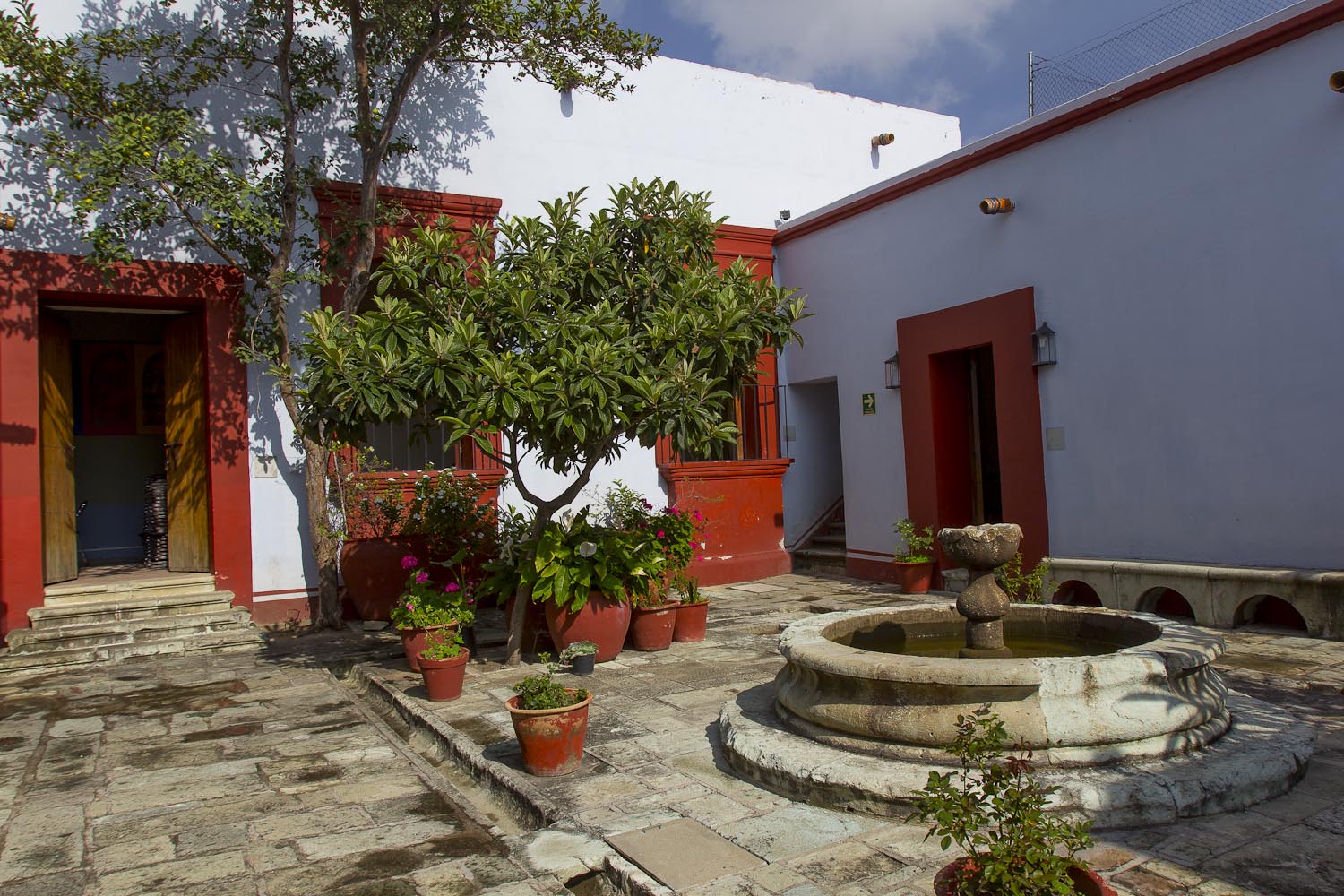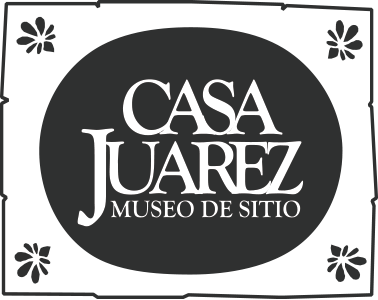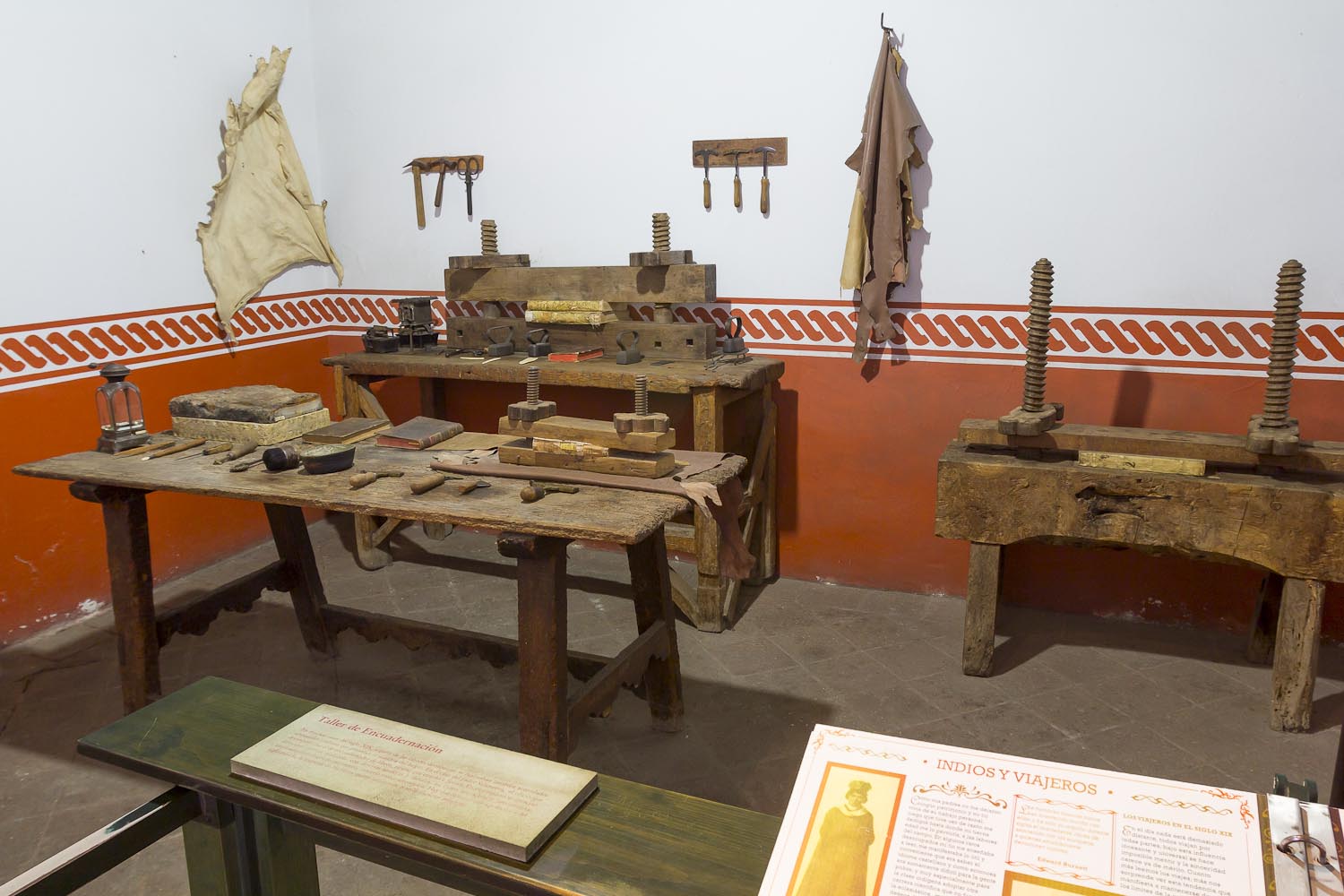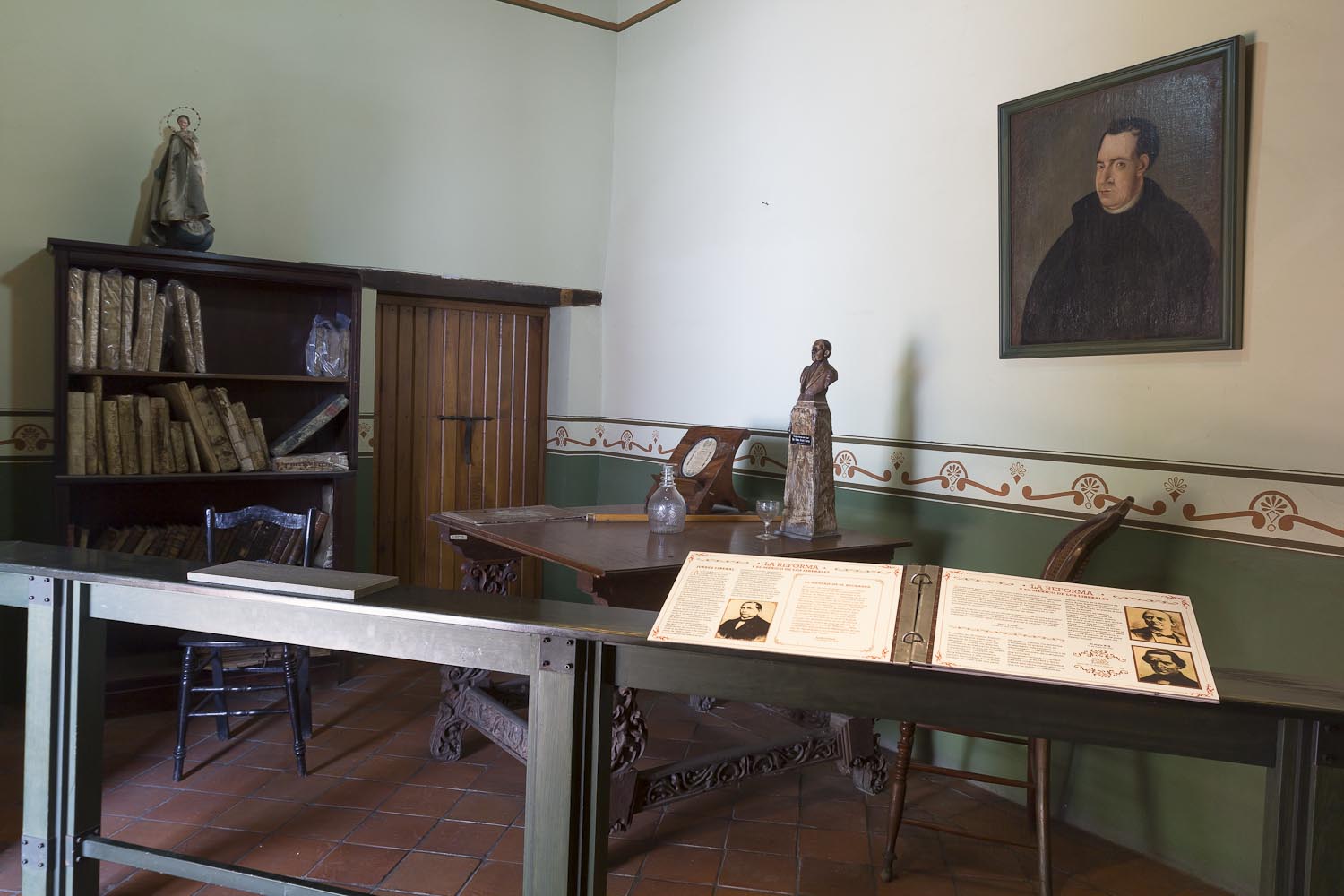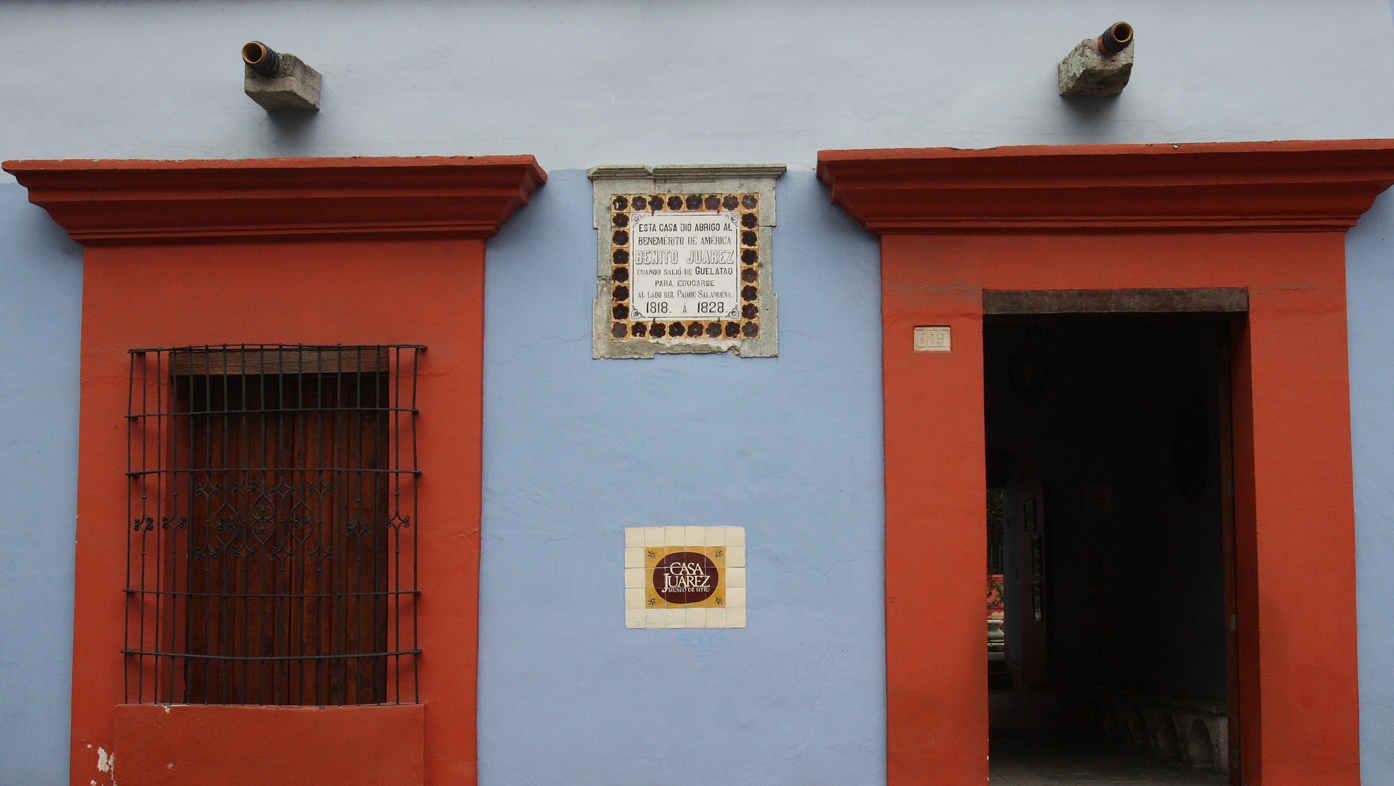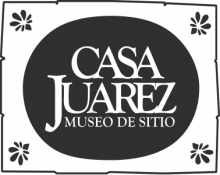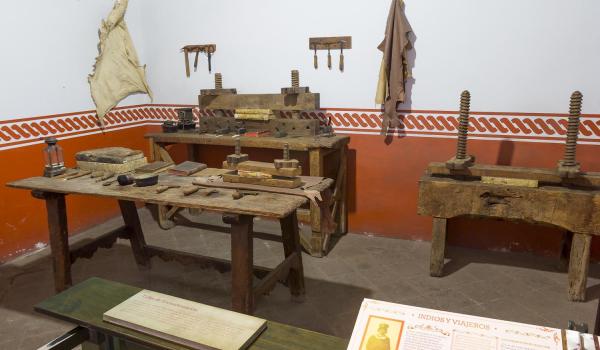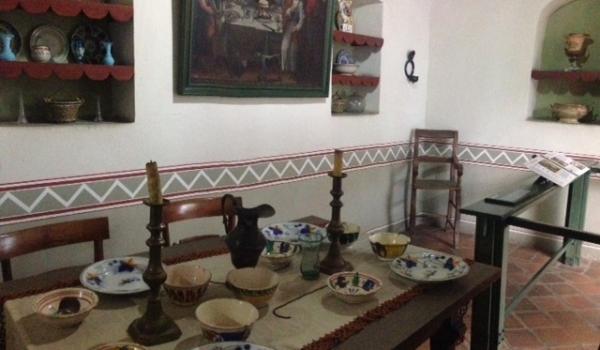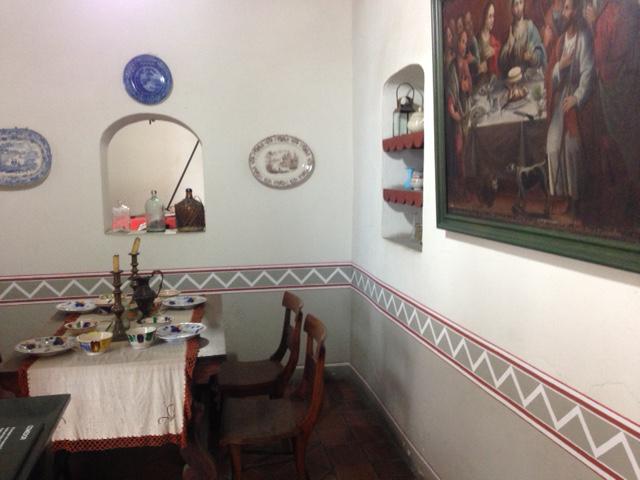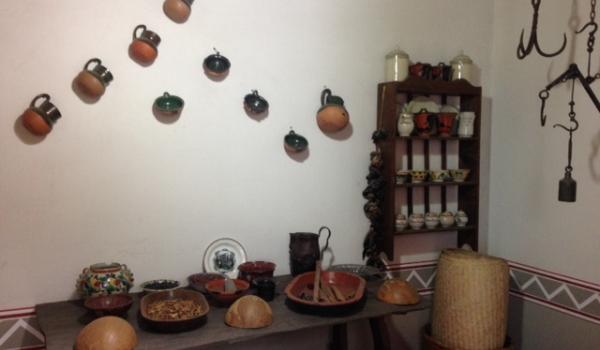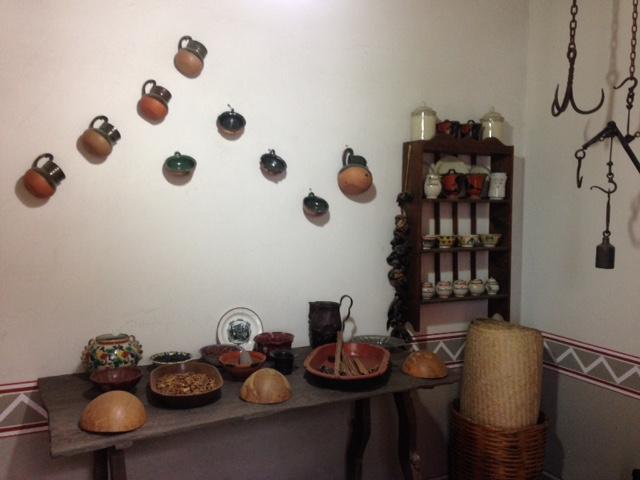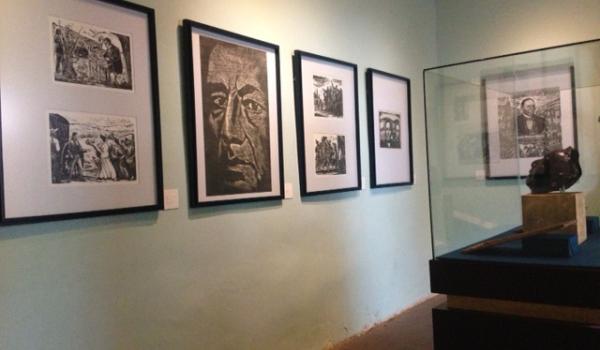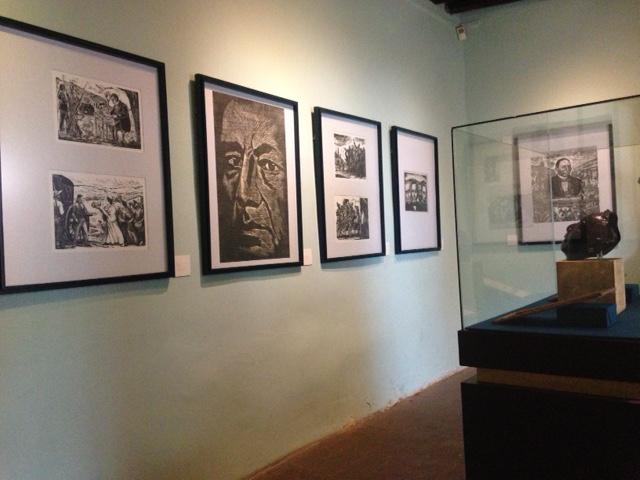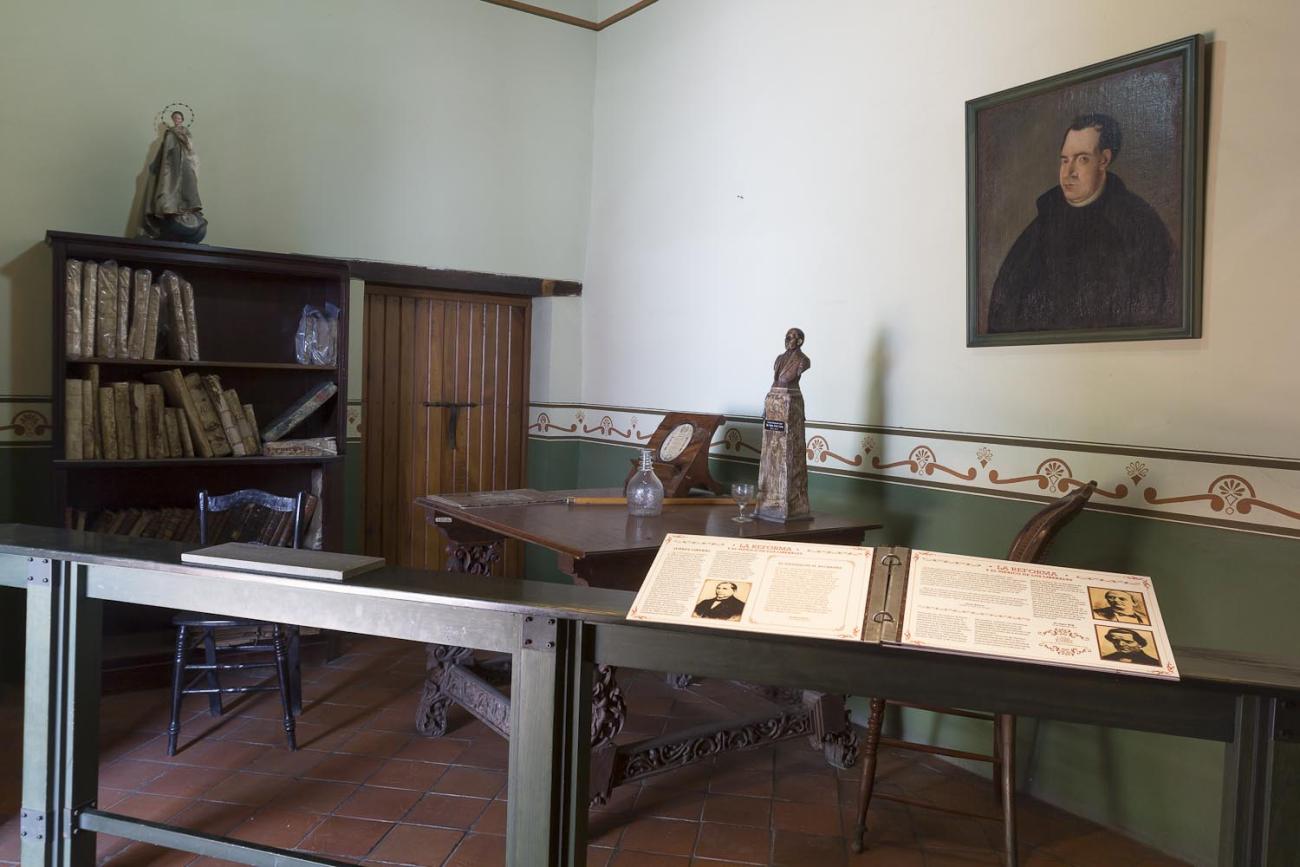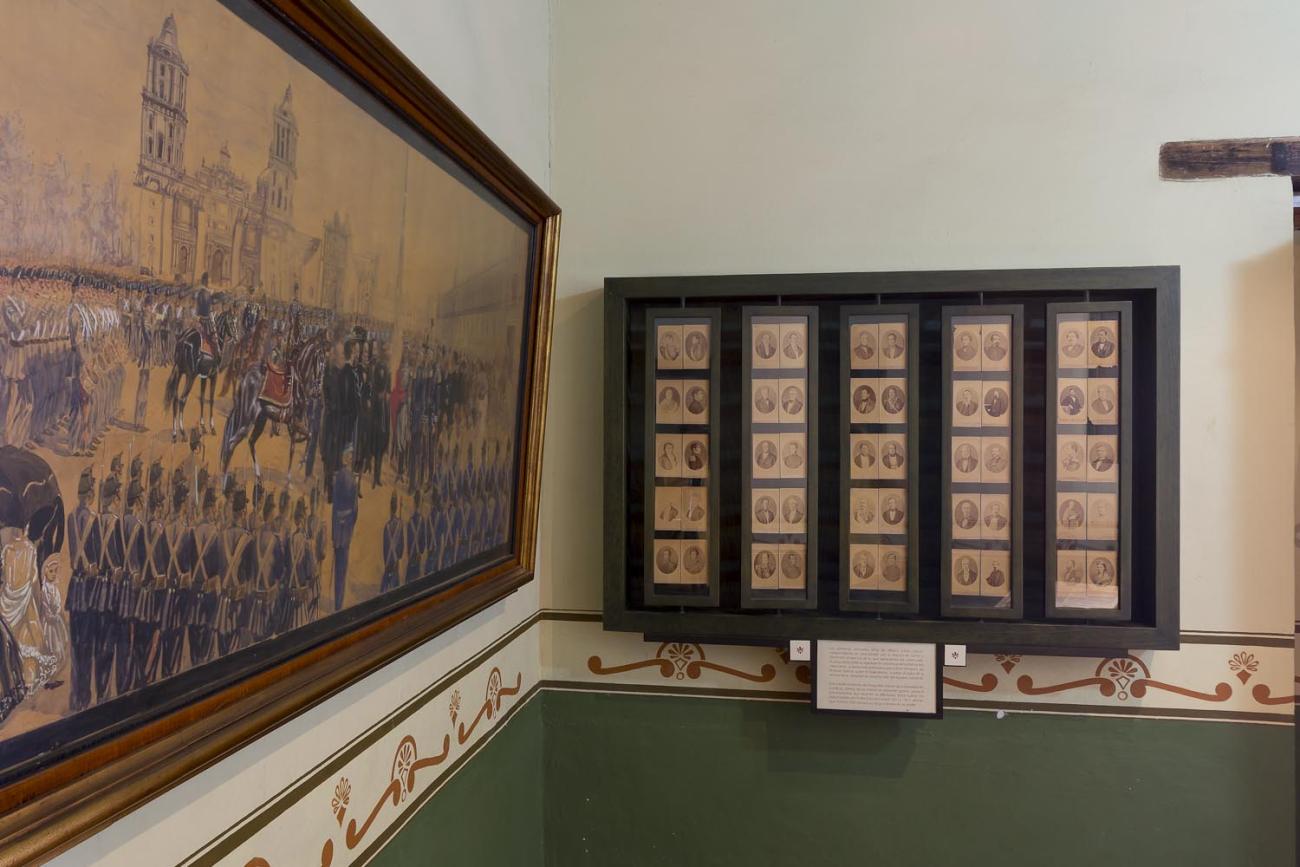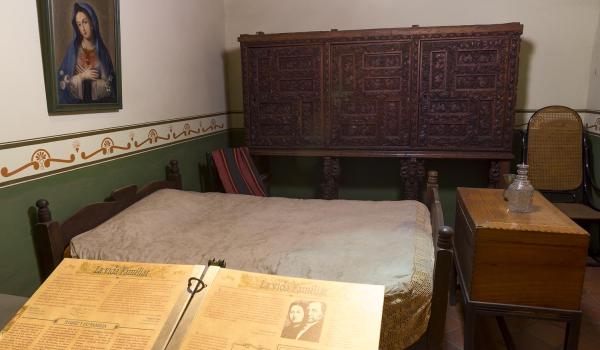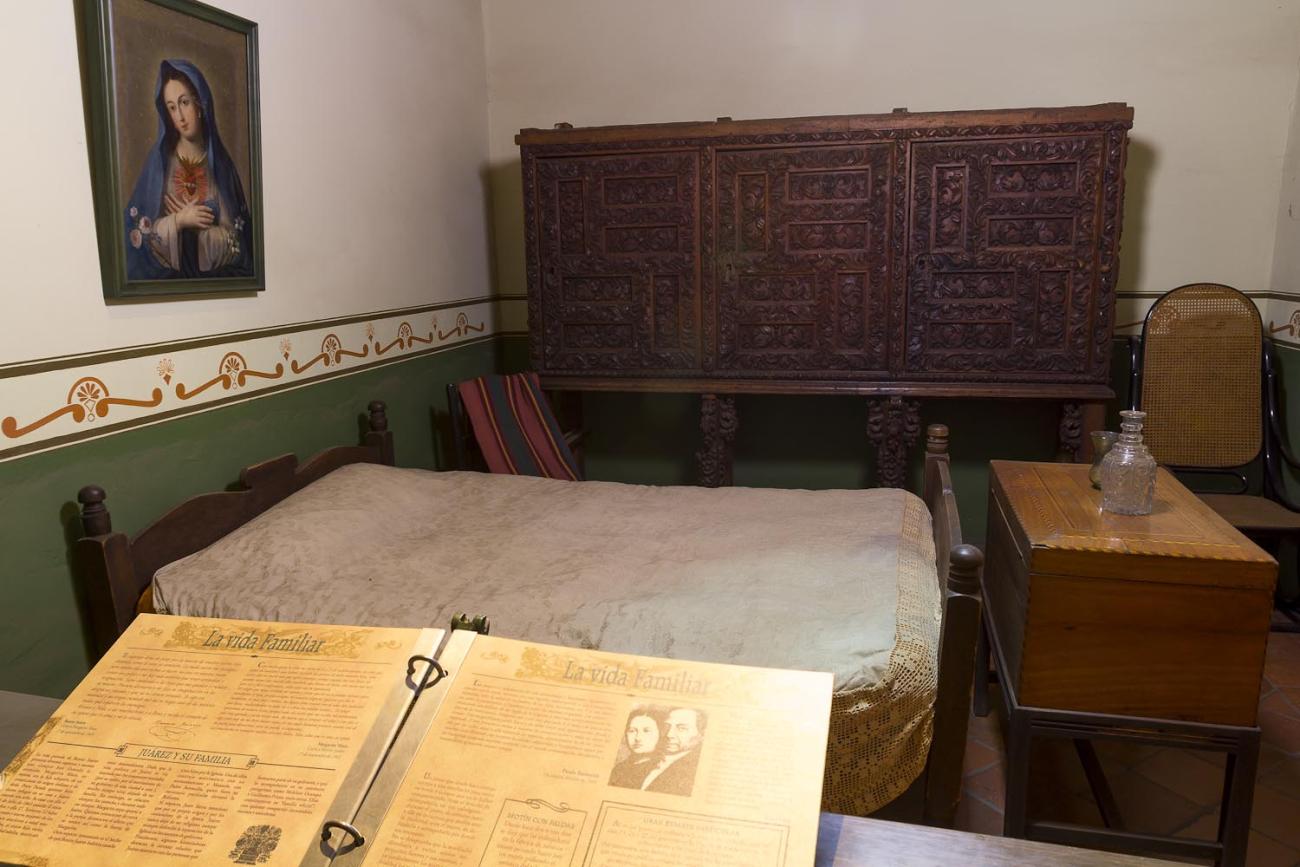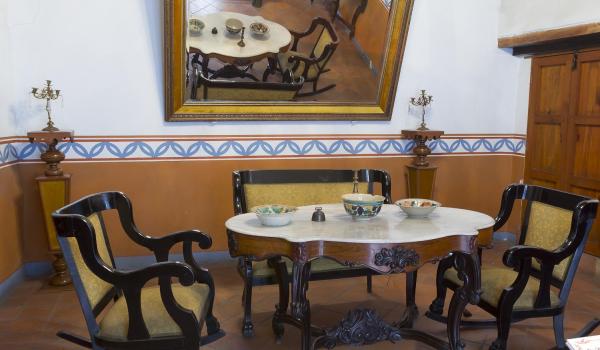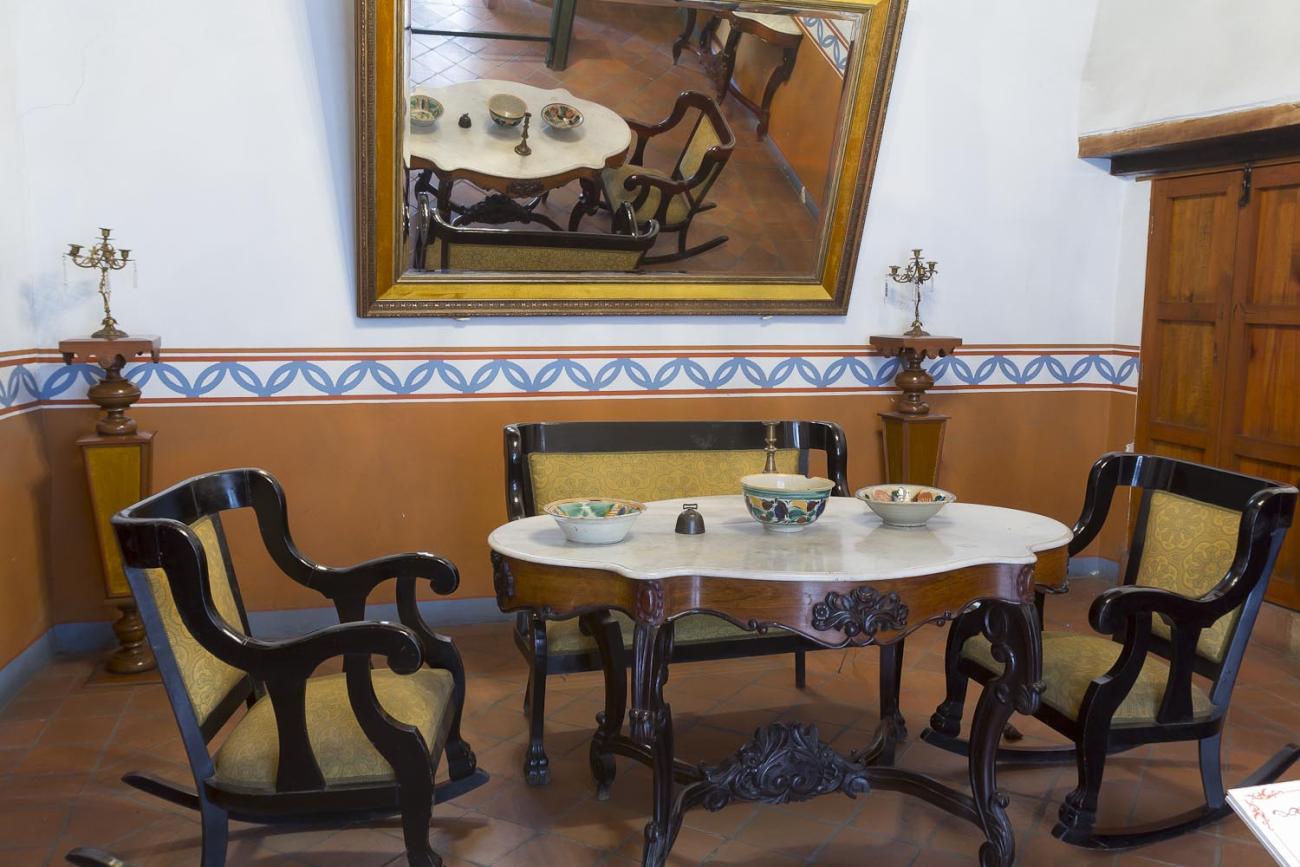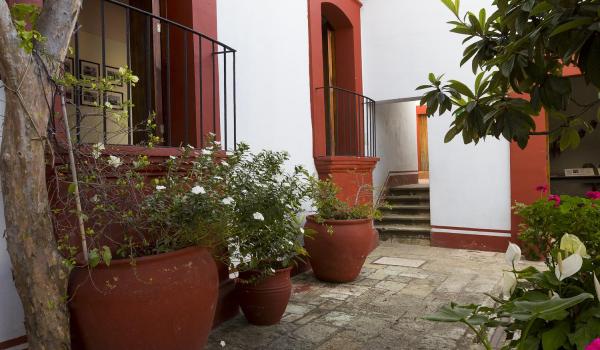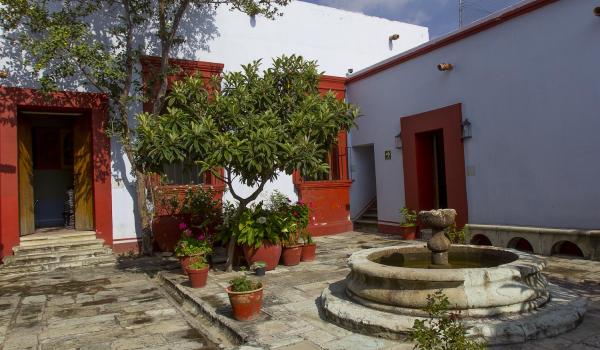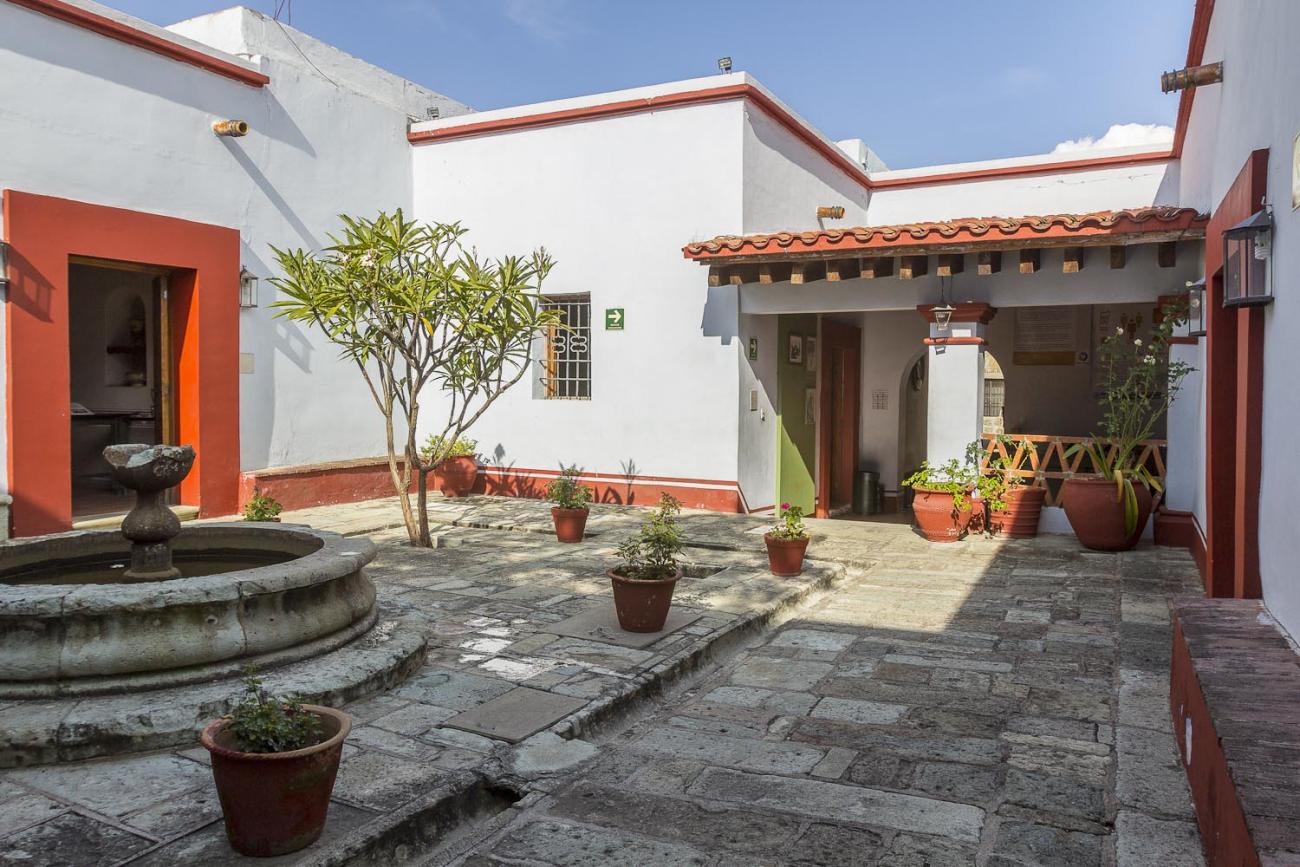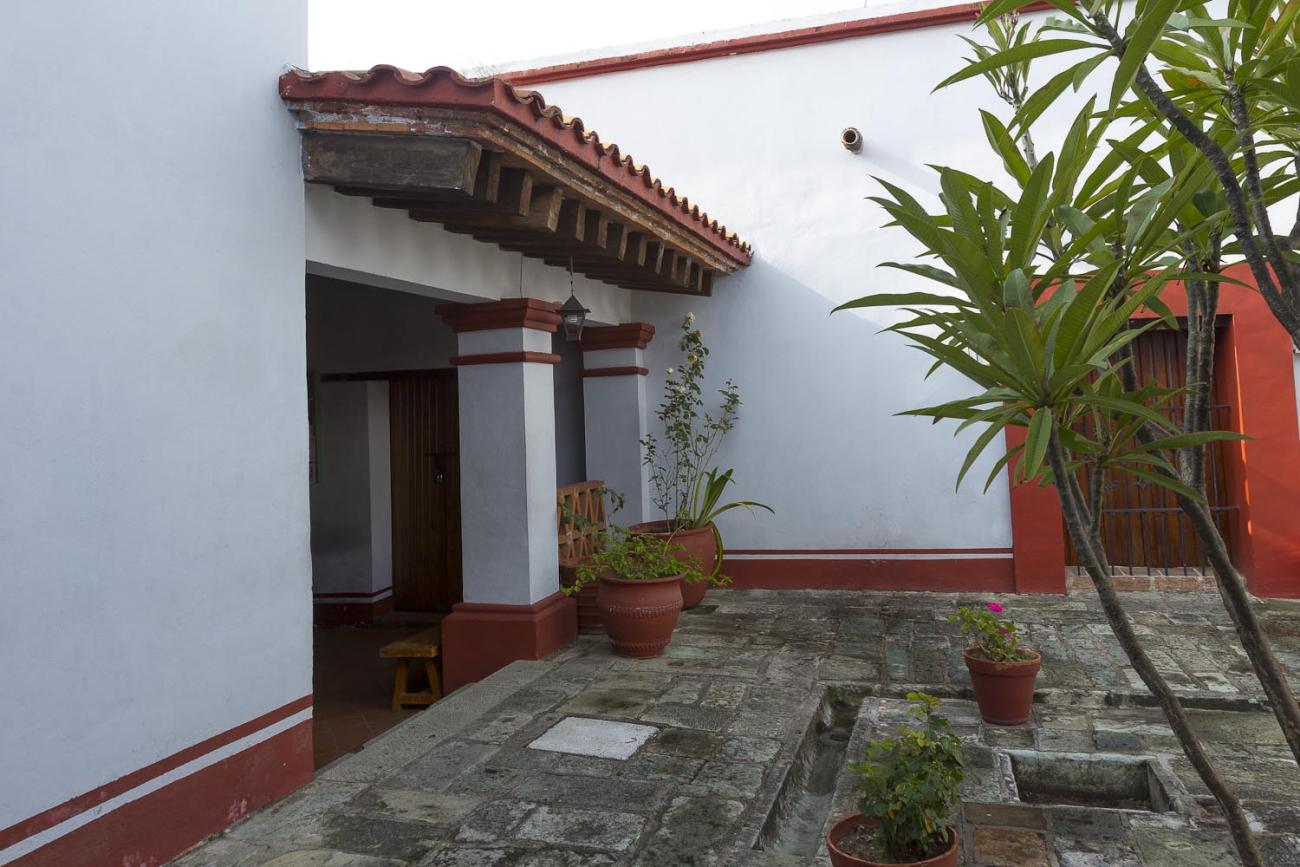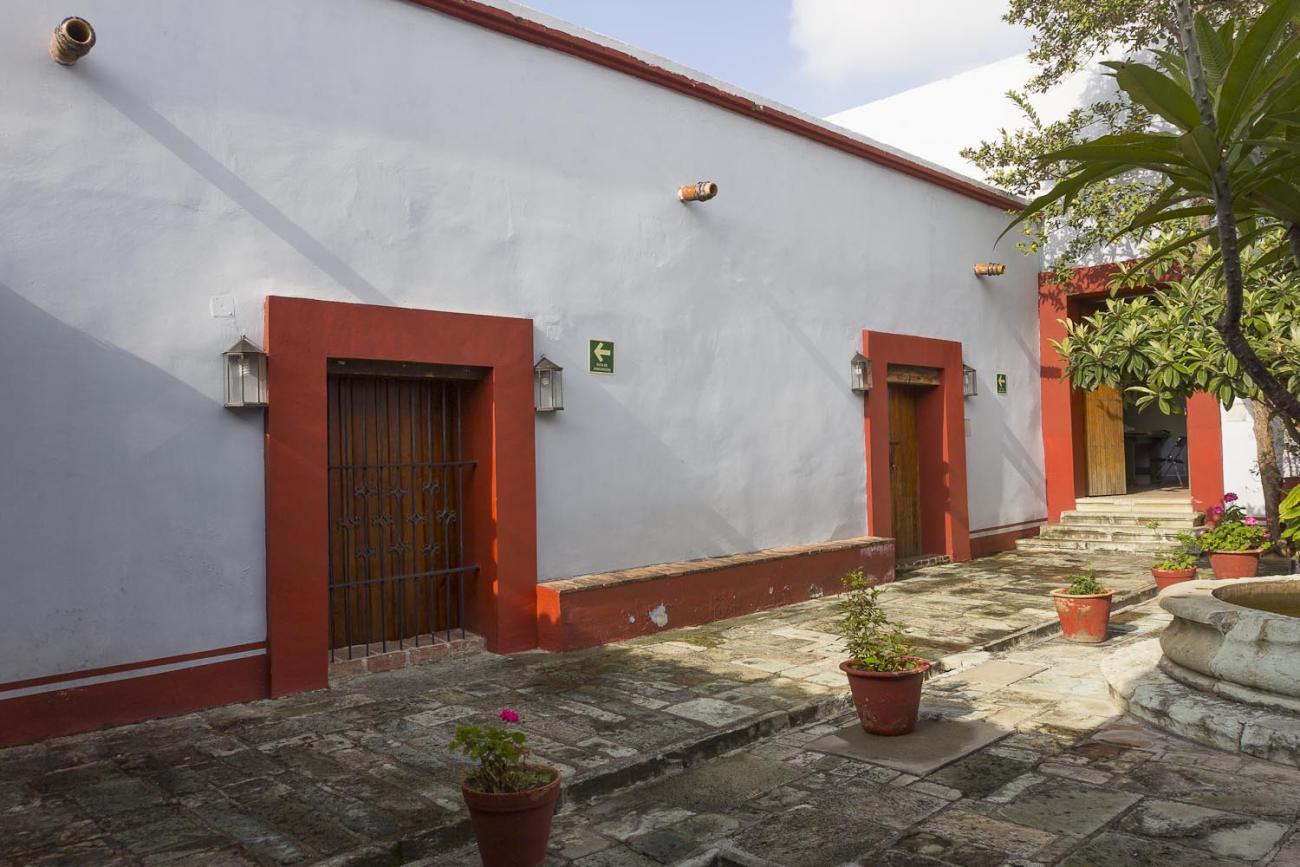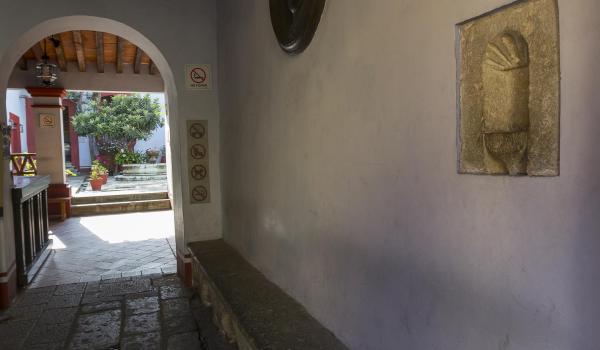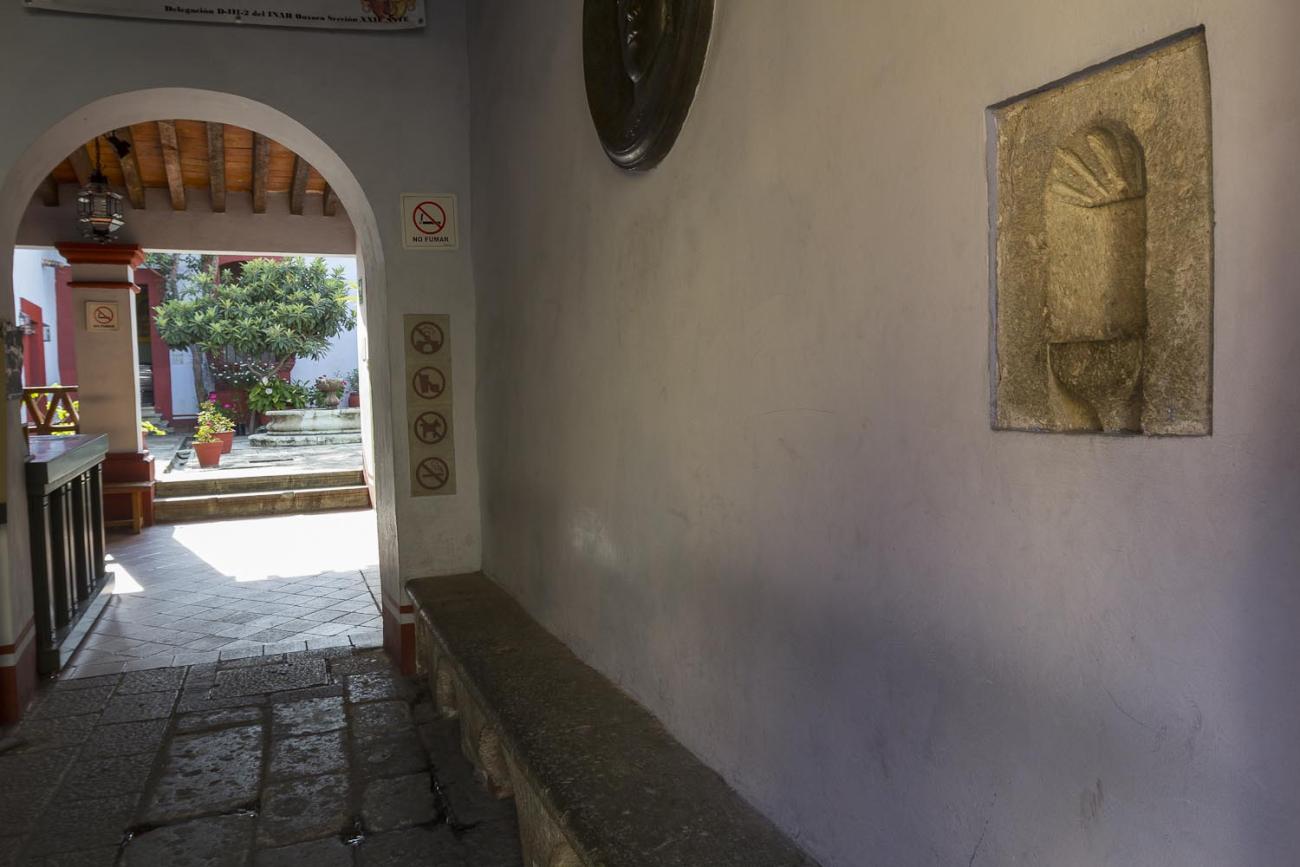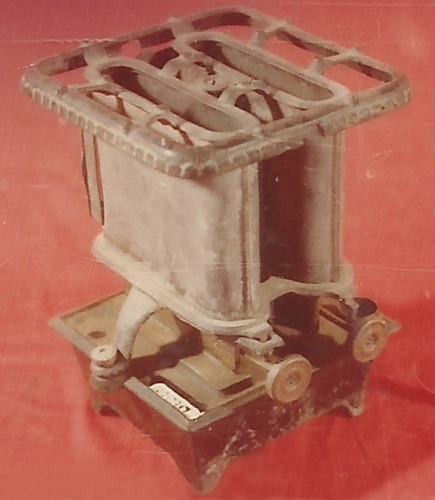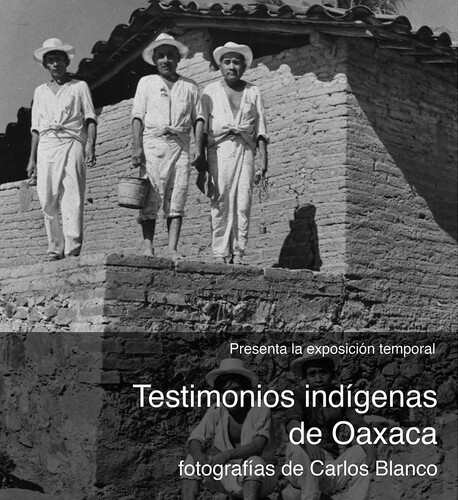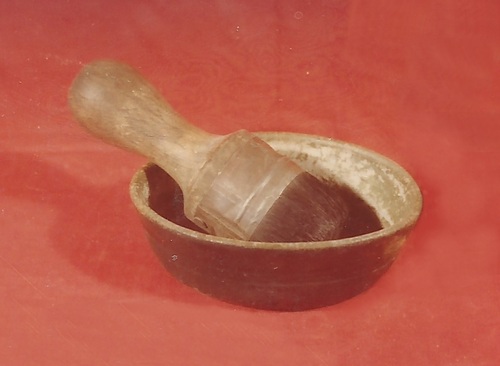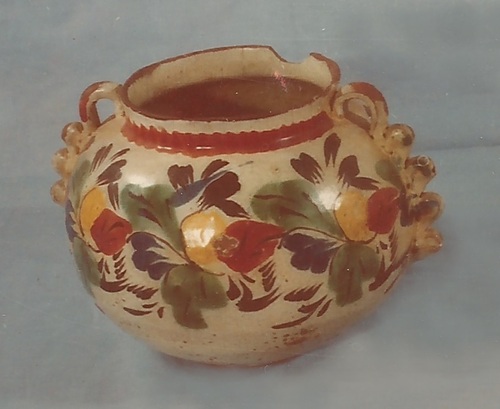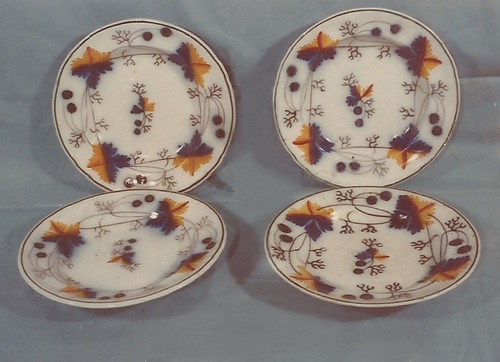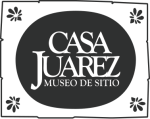The museum presents the private life and career of Don Benito Juárez, in the house that belonged to the protector of the young Benito who worked here as an assistant and apprentice bookbinder. The building was constructed in the eighteenth century, was converted to a small history museum and opened to the public on December 28, 1974.
A variety of rooms evoke the arrival of the future great man in the capital from Guelateo, providing information on aspects of his daily and family life, his professional training, the early years of his public life in Oaxaca and his arrival to the state governorship and the presidency of the Republic, as well as recreating a bookbinding workshop. The office and the hall tell the history of the Reform War, the French Intervention and the Republican triumph.
The house belonged to Antonio Salanueva, a bookbinder by trade who became a secular friar without ecclesiastical functions of the Third Order of St. Francis. It is a typical Oaxacan building of the eighteenth century, on one low story, with adobe walls and two courtyards.
Benito Juárez arrived at the house as a 12-year-old in search of his sister Josefa, who was working as a servant in the nearby Maza family home. He lived there for 9 years. Antonio Salanueva, who took him in and adopted him, made him his godson, and taught him to read and write. He helped him to enter the Santa Cruz Seminar and afterwards the State Institute of Arts and Sciences where he trained to be an attorney, leading him to become governor of Oaxaca and then president of Mexico.
In 1906, the year of the centenary of the birth of Juárez, Emilio Pimentel, the governor at the time, acquired the house to safeguard objects that had belonged to his predecessor. The building was converted into a museum and it opened its doors in 1933. The furnishings are not original but they recreate the atmosphere of at the time when the great man lived there. The first renovations of the house took place in 1974 enabling the expansion of the collection. In 1991 the museum closed and it was reopened on March 21, 1996. Today it holds microfilms and around 200 facsimile documents, as well as exhibition rooms.






